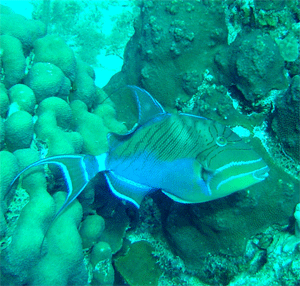
Orangespotted Filefish (Cantherhines pullus)The orangespotted filefish has narrow broken yellowish stripes that run along the side of the body to the tail. They can change to solid brown or darken and or pale in color. Usually found near the bottom and often hide in corals sponges or gorgonians.

Filefish
The whitespotted filefish typically has a brown or olive colored body with lighter spots. They rapidly change color patterns as camouflage.
|
Last updated: October 28, 2021





















